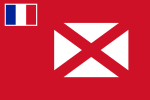Wallis and Futuna

Recommended vaccinations by the Centers for Disease Control and Prevention for all travellers to Wallis and Futuna:
Recommended vaccinations by the Centers for Disease Control and Prevention for some travellers to Wallis and Futuna:
Other diseases to consider while travelling to Wallis and Futuna:
Traveller information
Wallis and Futuna are two volcanic islands which lie in the South Pacific and, together with a scattering of much smaller uninhabited islands, make up this relatively unknown French territory. There’s plenty of history and culture to be found on both Wallis and Futuna, which have different languages and heritage. Add shimmering waters, pristine beaches (which surround the territory’s main islands) and its tiny islets with lush, tropical greenery, and you’ve got a recipe for an unforgettable, off-the-beaten-track experience.
Wallis is the larger of the two islands, and home to the capital of Mata-Utu. Its culture has roots in nearby Tonga, and historical sites include Takitumu Fortress, which was built in the late 15th century and believed to be the last stronghold of the Tonga empire. Notable natural features include the dramatic volcanic crater Lake Lalolalo, and the 131-metre-tall Mount Lulu Fakahega. Futuna’s origins lie with Samoan culture, and the island has a number of villages dotted around. The surrounding ocean has numerous opportunities for spotting marine life, including dolphins, butterfly fish, and stingrays. Keep your eyes peeled and you might even see pygmy killer whales. Both islands boast a cuisine which has been influenced by French cookery – sizzling seafood, sweet potatoes, bananas, and fresh bread and pastries.
Contains public sector information licensed under the Open Government Licence v3.0.